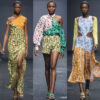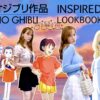Is Fashion Trend Still Relevant?
Over the past decade, the fashion industry has undergone a transformation as trends are no longer exclusively dictated by high-end fashion houses. Many social media users have taken the reins, even creating trends themselves. Meanwhile, the emphasis has shifted towards developing personal style rather than adhering to the trends dictated by the younger generation. This raises the question: Are fashion trends becoming excessive and perhaps unnecessary?
The dynamics of the fashion landscape have evolved, challenging the traditional top-down approach where fashion houses set the trends. Social media platforms now play a pivotal role in shaping trends, with users influencing and participating in the creation of styles. This shift signifies a move towards a more democratic and inclusive fashion environment.
The prevailing sentiment seems to lean towards a desire for individuality and authenticity. Many people are questioning the necessity of following trends, realizing that blindly adhering to them might result in a sense of betrayal to one’s unique style and identity. The focus has shifted from conformity to self-expression, encouraging individuals to embrace their uniqueness rather than succumbing to the pressures of trends.
In essence, the debate around the relevance of fashion trends revolves around the tension between collective trends and individual style. While trends may still provide inspiration, the increasing recognition of personal identity and unique expression suggests a growing inclination towards fashion that goes beyond the constraints of trends. Whether fashion trends remain essential or become obsolete is a subjective question, hinging on the evolving values and priorities of individuals within the dynamic world of fashion.
The Essence of Fashion Trends: Beyond Style, a Tale of Creativity and Influence
Fashion trends, in the past, were not merely fleeting styles or accessories that popped up temporarily. They were the outcomes of meticulous research and the development of ideas by renowned fashion houses. When introduced, these styles captivated the public’s affection for a certain period, serving as a means to express creativity and the DNA of the fashion houses.

Fashion trends reflect the vision, DNA, and superior techniques of the fashion house | Source: Dior
In history, fashion trends manifested as Chanel’s liberating little black dress in the 1920s, Dior’s New Look exuding post-World War II feminine elegance, and YSL’s sophisticated menswear styles in the 1960s. In more recent times, the collaboration between luxury fashion brand Louis Vuitton and streetwear label Supreme in 2017 brought forth a new craze, blurring the lines between luxury and street fashion.
The origin of past fashion trends predominantly stemmed from runway shows, particularly during Fashion Weeks, the holy grail where influential figures in the fashion industry congregated. Here, fashion houses unveiled their latest collections and showcased colors, patterns, and fabric materials they aimed to endorse.

Originating from prestigious fashion houses, current fashion trends emphasize aspects such as tailored craftsmanship, color schemes, aesthetic appeal, and artistic inspiration. Overall, the essence of fashion trends from high-end fashion houses lies in designs with a story, infused with artistic inspiration.
Furthermore, past fashion trends were presented to the public in a formal and highly reputable manner. The intention behind this approach was to give a trend longevity, making it a landmark in the history of the fashion house.
Therefore, a trend endorsed by high-end fashion houses essentially becomes a communication tool, leveraging the wealth and fame of the wearer as a pedestal. This strategy is evident in fashion icons like Jennie Kim, Kendall Jenner, Gigi Hadid, Zendaya, Harry Styles, who amplify the perceived affluence and renown associated with the trend.
Lastly, fashion trends extend their vitality through their tiered nature in the fast fashion and even counterfeit markets. When consumers show interest in a particular style, other brands produce similar designs, making the trend accessible to a broader audience at a more budget-friendly price point.
The Saturation of Fashion Trends and Its Impact
The technological boom has reshaped the landscape of the fashion industry and how fashion trends emerge. Social media platforms are continuously evolving, with users spending more time scrolling through TikTok and Instagram. In this era, anyone has the potential to become an influencer and create fashion trends.

In addition to fashion weeks, trends from social networks are creating a feeling of “tight space, crowded people” for fashion lovers | Source: LV
However, it’s essential to distinguish between two concepts: fads and lasting fashion trends. Traditionally, when we spoke of trends, it represented a phenomenon that was prevalent in society, reflecting the zeitgeist. For example, the Y2K trend formed from the late ’90s to the early 2000s, symbolizing the onset of a new era and carrying hopes for technological advancements. However, contemporary trends have a relatively short lifespan.
Most trends nowadays spotlight the fashion of subcultures to generate curiosity. Examples include Balletcore, Cottagecore, Clowncore, each rooted in a community’s long-standing fashion style. However, when content creators bring these styles to TikTok or Instagram, they transform into “here today, gone tomorrow” trends. The constant need for something new on these platforms contributes to the sense of trend saturation.
The proliferation of fleeting trends has led to a fast-paced fashion race, posing challenges for sustainable fashion. High consumerism and fashion waste continue to impact the environment. Moreover, the chase for trends may cause consumers to lose their individuality.
Content strategist Kristin Breakell notes that, similar to the beauty industry exploiting women’s insecurities, the fashion industry targets the desire for assimilation. Instead of choosing fashion products that align with personal style and preferences, following trends often leads individuals to lose their authenticity.
What Happens if Fashion Trends Disappear?
A world without fashion trends would likely see the decline of fashion weeks. Without dependency on trends, we would choose clothing based on personal preferences rather than chasing what’s popular. Concepts like being in or out of style would fade away, and individuals would recognize what suits them without external pressures of conforming to certain trends.
Moreover, the absence of trends would reduce the seasonal shopping frenzy. We would have clothing suitable for every season, made from adaptable materials. Fast fashion emphasizes trends, but without trend dominance, consumers would prioritize quality and durability. The fashion industry would need to adapt to this new era by focusing on product quality and sustainability rather than constantly changing to match trends.
However, trends, not just in fashion but in any industry, have a dual nature. Fashion trends still bring positive contributions. Without trends, there might be a lack of motivation to seek novelty, creativity, and experimentation. Many people find that if trends disappear, the downside could be a sense of monotony and boredom.
The existence of trends is not meant for us to relentlessly chase after them. Trends tell the story of the majority’s choices but also help us reflect on our own stories. Instead of constantly following a viral trend, we could start reassessing ourselves and how we respond to new things to find appropriate ways to apply them.

